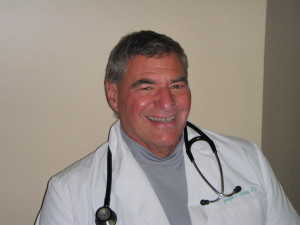 by John Parks Trowbridge, MD
by John Parks Trowbridge, MD
Reprinted from the May 2010 Townsend Letter with permission
Personal Pollution and Matters of the Heart
“This can’t be happening” is often the first thought. Gripping, gnawing chest pains give way to a heavier, crushing feeling that generates fear. The idea of “indigestion” soon gives way to “impending doom.” In this setting, 9-1-1 is sometimes a reluctant last resort, after antacids and resting produce only a pitiful response.
The arrival of paramedics brings reassurances from technicians who methodically start oxygen, apply EKG leads, and prepare for transport. Nurses and doctors in the emergency room go about their duties calmly and with dispatch – starting IVs, administering medications that relieve the urgent worry. Transfer to the coronary care unit is swift and easy, and monitors beep with the soothing monotony of a metronome.
From A to Z, everything about the medical team responses engenders trust and dependence in the patient: “These folks really know what they’re doing. Thank God I got here in time.” Trusting eyes gaze into the cardiologist’s face, searching for any clues that the situation is worse than it might appear. Again, reassurance: “You’re here, you’re safe – we need to do some tests to figure out how best to fix you now.”
Slippery slope? Conveyor belt? One-way road to a “dead” end? Many terms have been applied to the “work-up” and “treatments” offered in modern cardiology and cardiovascular surgery. In point of fact, major studies 30 years ago showed that one in six bypass operations are life-saving, when high-grade blockage is worsening in the left main artery or early in the left anterior descending (LAD) artery (the “widow-maker” or “artery of sudden death”).1
Then what of the other five in every six patients? Therein lies the rub.
‘Treating’ with Tests
Everyone knows about the routine resting heart tracing: 12-lead EKG, often with a “rhythm strip” of several seconds. The predictive value is minimal in the absence of symptoms or an irregular pulse.2 A 24-hour (or longer) Holter monitor gives valuable insights into rhythm disturbances but has little use in confirming “ischemic” disease, where blood flow to regions of the heart muscle is becoming compromised. Worthy of comment is that ischemic patterns can be documented in patients without blockage in the heart arteries but with magnesium deficiency or other conditions creating episodes of heart artery spasm. Vasospasticity can constrict blood flow transiently, and chest pains, shortness of breath, weakness, pale complexion, and sweating can mimic heart “angina pains” or even “myocardial infarction (MI).”
Angina simply means reversible chest pain events, often responding to nitroglycerin-type medications. The success of these drugs produces further patient trust that the cardiologist “knows how to treat me.” Myocardial infarction results from sudden blockage of blood flow to a (small or large) portion of the heart muscle. A heart artery already narrowing from deposits of plaque is more easily blocked completely by sudden formation of a platelet plug, also called a “thrombosis” (ACS or “acute coronary syndrome”). More recent studies show that the gunk in plaque is more likely to break off if a smooth hardened surface has not formed (so-called vulnerable plaque). Such free-floating chunks will always find a smaller arteriole and lodge there, blocking blood flow beyond … a heart attack.3
Vasospastic episodes can occur in patients who have artery blockage disease and in those who do not. When tests show minimal blockage that should not be causing angina episodes, cardiologists are sometimes stumped and nevertheless recommend “revascularization” procedures: balloon angioplasty, stents, even heart artery bypass. Each of these operations is based upon a “Roto-Rooter” plumbing concept of heart disease: open the plugged pipes or simply route around them.
This “conventional cardiology concept” comes from the tests upon which they rely in figuring out how to fix heart disease.4 Simply stated, “If the only tool you have is a hammer, then all the problems you see look like nails.” Since many cardiology tests look at the “plumbing,” the treatments advised are designed to address flow blockages that can be seen. That viewpoint creates the fundamental restriction – blinders, if you will – preventing well-trained cardiologists from being able to see the value of treatments other than those in their “plumber’s toolkit.”
One of the most widely known heart tests is the “stress EKG.” A blood pressure cuff is applied, patches with electrical leads are placed on your body, you begin to walk on a treadmill, and the workout is gradually increased to a jog.5 If your legs become fatigued, if you become short of breath, or if the heart tracing shows certain changes – “flags” that indicate problems – then the test is concluded; otherwise, you race along to a calculated heart rate. Comparing your blood pressure changes to the exercise heart tracing gives a hint of how well your heart muscle is working; in other words, how well your blood is flowing to your heart and other muscles.
Even a “negative” (“normal”) stress test is often followed by a “nuclear stress test,” simply because your cardiologist “wants to be sure.” This examination starts with a stress test followed immediately by a radioactive “tracer” injected just as a fancy Geiger counter is placed over your heart. About four hours later, you are placed under the Geiger counter again. Images “after exercise stress” and “at rest” are compared – if the tracer pictures after exercise show “holes” that later “fill,” you have blockage disease restricting the blood flow. If the “holes” don’t “fill” later at rest, then you have had one or more heart attacks where muscle tissue has been replaced by thickened scar. No “holes” after exercise? Then you appear to have adequate blood flow to your heart muscle.
Even a “negative” (“normal”) nuclear stress EKG is often followed by a “coronary angiogram” (heart artery “pictures” – also called an “arteriogram” or “catheterization”), simply because your cardiologist is “being complete” in your evaluation after being admitted for chest pains. Trusting your doctor – and reassured by your test reports so far – you naïvely consent to this much more invasive test. A catheter (tube) is placed into a large artery (as in your groin) and advanced to your heart, where X-ray dye can be injected to outline the pattern of your heart arteries. One tiny technicality: the severity of diameter narrowing is commonly overestimated by 30% to 60%.6 [As the “gold standard” for coronary artery disease, angiograms have several limitations. Recently developed computerized coronary angiography instruments (not yet widely available) will help to work around some of these errors of interpretation.]
Bingo! Narrowing is likely to be identified, since you did come in with chest pains. Now your cardiologist has a reason to recommend “balloon angioplasty” (another tube, this one with a blow-up tip that crushes blockage against the wall of the artery), often with placement of a “stent” (sort of a Chinese finger-trap in reverse, where it is inserted stretched out then “springs open” to press against the wall of the blood vessel). Modern stents are “radioactive” or coated with “chemotherapy,” to reduce your body’s attempt to cover over this strange device, thereby narrowing the artery again.
Balloons? Chemotherapy? Radioactivity? You might have a few questions, but your cardiologist is reassuring that you’ll probably be able to avoid “open heart surgery” (a bypass operation). Now that’s appealing! Once again, you innocently consent to another procedure, hoping that your future will be bright and comfortable. But the results from surgery can’t ever be guaranteed.
Speaking of surgery – what happens if your cardiologist invites a cardiovascular surgeon to discuss a bypass operation with you? For the vast majority of patients, the answer is simple: your lack of knowledge about options will mean that you trustingly agree to have the surgery. Americans are suffering in droves, like lemmings to the sea: in the US in 2005, 469,000 coronary artery bypass procedures were performed on 261,000 patients. An estimated 1,265,000 “stent” procedures were performed; approximately 69% of these were performed on men and approximately 50% on people aged 65, according to the National Center for Health Statistics. During 2006, some 2,192 heart transplantations were performed.7
But What If You’re ‘One of Those Five’?
If only one in six patients has a heart bypass operation8 that is life-saving or life-extending, what is the situation for those other five patients who also often undergo the surgery? Most survive, some do not, many feel better … but their improvements might well have been possible with modern medications and lifestyle changes alone.9 Virtually every “open-heart” patient will suffer some slight or significant degree of “pump syndrome,” neurological or mental changes associated with the heart-lung pump.10 About 1 in 20 bypass patients will die during or soon after surgery. Of those who survive, over half can be expected to suffer fairly dire concerns over the next 12 months: heart attack, stroke, heart rhythm disturbance, congestive heart failure, or rising blood pressure. And each of these events will force these patients back into the trusted arms of their cardiologists and consulting medical specialists.
Perhaps one of the best reviews of the limitations, side-effects, and outright hazards of angioplasty, stents, and bypass surgery can be found in several chapters of the book, Is Heart Surgery Necessary? What Your Doctor Won’t Tell You, by Julian Whitaker, MD.1 Before undergoing any of these procedures, every patient owes his family – and him- or herself – the time to read and understand these risks, in order to question his doctors appropriately and be able to give an actual informed consent, should he so choose.
What About Treating the Patient?
Wait! Can you actually afford to wait, do you have the time – the luxury – to read this and other books, to get the true details for yourself? While doctors sometimes give the impression that “you’re a ticking time bomb, we’ve got to move quickly,” published studies have shown quite the opposite conclusion. Harvard cardiologist Peter Graboys showed, 20 years ago, that patients who chose to wait before having bypass surgery suffered no deaths from heart disease over the next 2½ years.11 A second study showed only a 1.1% annual death rate from heart disease over the following five years for those who politely (or not so!) declined to have an angiogram, likely concluding that this was just “a map for surgery” that they were reluctant to undergo.12 This rate is far below an estimated up to 5% death rate for bypass surgery. Balloon angioplasty surgery offers an estimated 1% deaths, but recurrent procedures are quite likely.
Recognize that Harvard’s cardiology staff used only routine medications available at that time, along with “usual” lifestyle changes – diet, exercise, and so on. As conventional physicians, they had little interest (or faith) in integrative technologies such as nutritional supplements or chelation therapy. The combined use of (even more modern) medications now, along with specific “orthomolecular nutrition” and chelation, would be predicted to enhance further the startling results that they obtained with minimal effort, and clinical experience supports that expectation.
Rather than progressing rapidly to invasive and potentially risky tests, an integrative physician sometimes will order a set of echocardiograms, basically “sonar” ultrasound pictures of heart muscle performance. When valves and heart muscle function appear reasonably normal and the “ejection fraction” (percentage of blood pumped from the heart with each beat) is normal or almost so, then performance has been preserved even though blockage disease might be present. Activity or exercise might display reduced capacity, consistent with blood flow reduction. A patient with frequent angina, and especially with chest pains at rest, is more likely to have blockage changes best treated first by surgery unless he or she refuses and an aggressive nonsurgical treatment program is pursued.13
The recent availability of “heart scanners” (EBT, or electron beam tomography) has helped to quantify the degree of blockage present as well as its location. This 10-minute test uses minimal radiation and gives reasonably reliable pictures, from which a heart artery diagram of calcium-hardened blockage can be constructed. Again, “high-grade” (severe) blockages early in the left-side heart arteries can move a patient toward the “surgical option” for best survival, with follow-up chelation to treat the underlying cause.
An integrative physician offering chelation therapy will, of course, review and consider cardiology tests available from other specialists in order to best plan a treatment program. Angiogram pictures, though, will rarely be required.
Nonsurgical Treatment of Heart Disease?
Can blockage disease be effectively and safely treated without surgery? The answer, as demonstrated by dozens of clinical studies and case reports over the past 50 years, is an unreserved “Yes!”
However, reduction of blockage should be considered only a possible and desirable side effect and not the goal of a chelation treatment program. An early thought in the late 1950s was that chelation “worked” by removing artery blockage. This seemed a logical way to explain observed improvements in heart function, EKG patterns, congestive heart failure, chest X-ray images, angina chest pains, shortness of breath, and activity levels.14 Without question, some patients do show reduced blockage, as demonstrated by before-and-after-treatment heart scan images in two patients reported to the American Chemical Society in 1994.15 Of interest is that virtually 9 out of 10 patients show improved heart performance – but not all of those show reduced blockage disease by any test performed.16
Another factor to recognize is that our tests are less than precise in quantifying the degree of blockage present, whether improving or worsening patterns. Several assumptions are made in each test setting (heart, carotid neck arteries, abdominal aorta, legs, and so on). The presumed “gold standard” – such as heart angiograms – are difficult to interpret at best … and the same test can be read differently on different days … by the same cardiologist. If blockage doesn’t disappear with chelation, then what could explain the obvious and dramatic clinical improvements in the vast majority of patients? In actual fact, blockage probably is reduced in many arteries: a 10% to 15% increase in “cross-sectional diameter” (the area through which blood can flow, where larger diameters have less resistance to flow) produces double (or more) blood volume delivered to tissues downstream.17 Current tests fail to reliably detect such small reductions in blockage with increases in blood vessel diameter – but the patients can clearly feel and enjoy the improvements, as overwhelmingly noted with chelation therapy. The use of artery bypasses and stents is based upon increasing the diameter of a “feeding” vessel, but such operations involve many risks and the duration of improvements can be limited. Indeed, the diameter increases of bypasses and stents are noted only at the operation site and not generalized throughout the arterial system as with chelation therapy.
Studies documenting patient improvements with chelation are well summarized elsewhere.18-20 What has received very little attention is how much these improvements can be attributed to decreased toxic metal burdens – coincidentally reducing inflammation – and other mechanisms. When platelets have less free radical inflammatory injury, they become less “sticky,” less likely to form sudden “clots” or “plugs” and completely block ailing arteries. When magnesium is provided in large doses, blood vessels more readily dilate to increase flow volume and have less spastic tendency to restrict flow. Vitamins B6 and C, amino acids lysine and proline, essential fatty acids, zinc – these and other nutritional supports that are provided during a series of chelation treatments clearly help to stimulate improved clinical function, detoxification, and tissue repair. Even nattokinase (or lumbrokinase), which lowers blood flow “viscosity” by reducing free-floating monomer fibrin strands, might help explain some of the benefits seen in advanced chelation programs.
What About ‘Personal Pollution’?
All chelating medications share in common one key property: forming a particular chemical bond with certain positively charged ions (metal atoms).21 This drug–metal complex allows for easier removal of the metals through the kidneys. In many cases, the chelating drug prefers to bond with so-called heavy metals that are toxic to the body. Reducing the presence of toxic metals allows for usual “physiologic” chemical reactions to proceed more normally.
Toxic metals insert themselves in place of appropriate metals (such as magnesium or zinc), “sitting” on active sites in enzymes and blocking needed chemical reactions. In addition, they stimulate a tremendous increase in the rate of production of “free radicals” (also described as “oxidants” or “ROTS,” “reactive oxygen toxic species”) that inflict lasting damage to body cell structures, especially those involved in the mitochondria, the tiny “energy-factories” that produce the ATP that powers all cell processes in all cells. (Antioxidant vitamins – such as vitamins C and E and beta-carotene – glutathione, and other molecules help to protect vital molecules from free radical injury.22) Another concept to describe free radical production is inflammation, the destructive and powerful process that creates the pain of arthritis, of heat and chemical burns, and basically all departures from normal function and physiology. Blockage within blood vessels, of course, is one of these “departures.”
A better understanding of how toxic metals lead to suffering and death is found in several observations over the past 40 years, almost from the time humans began in earnest to poison the planet. Animal studies have shown that heavy metals are uniformly neurotoxic, immunotoxic, carcinogenic, and directly harmful to all vital organ systems. The onset and severity of suffering depends, of course, on the dose and exposure patterns as well as cellular compartmentalization and tissue equilibration. Death follows slowly or rapidly based on the same criteria. Toxic heavy metals are throughout the environment (air, food, water, objects) and there is no way to avoid them entirely. Since they come into your body easily but leave much more slowly, all of them accumulate over time and increasingly interfere with body metabolism.
Every person will suffer some (slight or increasingly significant) degree of impairment among his or her many organ systems, based upon his or her exposures, nutritional status, biochemistry, physiology, and so on. Basically, the “weakest link” in each individual will begin to show toxic damage first. In a more global wholistic view, virtually all human ailments (including expression of genetic aberrations) can be aggravated by – or even directly attributed to – increasing burdens of toxic heavy metals.23 Since bioaccumulation from the environment cannot be avoided, attention must be directed to minimizing exposure and removing those that have gained entry. The medical procedure of removing them, of course, is called “chelation therapy.”
A general idea of the magnitude of “toxicity” can be gleaned from providing tainted cage water to rodents, where their only liquid source is laced with a heavy metal. Daily water intake is based on animal weight. Thus, calculations can be made regarding how much of a particular toxic metal was required to kill any individual animal. The lowest dose that killed the first one is noted. Amounts are recorded all the way up to the highest dose, the one that finally killed the last remaining animal in a group of 100. These name for this group of concentrations is lethal dose (LD), and a number is appended, to indicate the population percentage that has succumbed to that amount of toxic metal. For example, the LD1 is the concentration to kill the first animal; LD50 is enough dosage to kill half of the subjects (50 out of the 100). The LD100 dose is the amount that will kill all of the animals.
Of greater concern to people who think they have only minimal exposure to toxics is that small amounts of different toxic heavy metals can combine to create ever more destructive changes. The overwhelming majority of people are lulled into a false sense of security that they “don’t have too much toxics on board, their levels are really ‘low.'” One rodent study showed that combining the LD1 level of mercury with 1/20th the LD1 level of lead in the cage water did not kill just 2 animals (addition), it did not kill 4 or even 8 animals (multiplication) – this seemingly inconsequential combination killed all 100 of the rodents (amplification).24 Extending the implications to human beings is sobering, particularly when we are making our environment increasingly toxic. Modern medicine has no other method to remove toxic metals (as or after they enter) than the chemical process of chelation. Indeed, this is the only FDA-approved method of detoxifying from this heavy-metal toxic body burden.
Treating the ‘Personal Pollution’
The question, does chelation work? was well answered in the very earliest studies, in the 1950s, by Norman E. Clark Sr., MD, the “father of chelation therapy in America.”25 Subsequent studies have confirmed his early observations, with rare exception (and those often criticized as having faulty scientific design or controls). But two questions arise: first, will chelation help all blood vessel problems? And second, what about over-the-counter oral products that might work just as well as the intravenous treatments?
The range of occlusive (blockage) blood vessel disorders – in the heart, neck, brain, central core (including kidneys), and legs – has been widely studied. The results are uniformly positive, though the percentages of those areas that improve rise with increasing distance from the brain. As a clinical rule-of-thumb, “brain” and “eye” problems improve significantly about 75% of the time, heart problems about 88%, and leg problems about 92%. (Some studies have suggested even better results.26,27) The differences deserve further investigation, but suffice it to say that they probably relate in some degree to different forms of calcium deposition (“hardening”) in the different artery walls.
The most common diseases causing significant blood vessel blockages are diabetes (both types, especially when poorly controlled) and high blood pressure (“hypertension”). In both conditions – as in most others – the improvements with chelation can be startling. Legs scheduled for amputation – a frequent conclusion for diabetics – have been largely saved by chelation treatments.28,29 Clinical experience confirms that blood sugar control is often improved, sometimes dramatically, and dosages of insulin or oral hypoglycemics can be reduced for many patients … reducing side effects, of course.
The sugar-control implications for “metabolic syndrome” (an inaccurate title for “insulin resistance syndrome”) are overwhelming. Also misnamed “cardiometabolic syndrome,” this pattern shows elevating blood pressure, blood sugar, and triglycerides, lowered HDL (“heart protective”) cholesterol, along with enlarging waistline. This cluster of disease findings is associated with higher incidences of heart attacks and strokes, two of the top three leading killers in the US. Chelation therapy produces impressive results in these patients. Results in other disease conditions (such as Raynaud’s phenomenon, scleroderma, systemic lupus, rheumatoid arthritis, Parkinson’s, and so on) are similarly encouraging.30
So the second question – “over-the-counter” items that might help – raises some interesting concerns. For example, when people order the latest hyped-up bottle from a newsletter or other brochure, are they really worsening inside while they delay seeking actual, scientific, evidence-based chelation therapy? Younger people, with lesser exposures to toxics and fewer degenerative issues, might “buy some time” with such readily obtained “nutritionals.” Older folks – especially those with degenerative diseases or (even unknown) history of prolonged or extraordinary exposures – are walking straight into the lions’ den. While any one individual might live a long and fruitful life without actual chelation, the vast majority are likely to succumb to the common killers, usually at the common ages. Even sequential “negative” (“normal”) test reports showing minimal blockage changes in arteries are no protection against sudden blockage from “sticky” platelets or other results of localized inflammation.
The longer-lived European (especially Mediterranean and Baltic) societies, particularly those whose citizens remain vital and active late in life, can offer some hints as to useful dietary counsel. Sulfur – found in onions, garlic, many grains, legumes, red meats, eggs, nuts and seeds, broccoli, cabbages, even milk and asparagus – readily binds with toxic heavy metals, but only weakly. Selenium – found in brazil nuts and a variety of meats – also can bind to heavy metals. When foods are grown (or animals are raised) in sulfur- or selenium-deficient soils, they have minimal amounts of these valuable minerals. Their use as significant “chelators” – even in the form of alpha-lipoic acid or methyl-sulfonyl methane (“MSM”) or N-acetyl-cysteine (“NAC”) – has not been adequately studied.
Some publicly promoted products have cilantro, chlorella or other algae, and other botanical nostrums and are widely touted as helping to remove toxic metals. Again, their use as significant “chelators” has not been persuasively studied. Claims are made for EDTA in various products administered orally, but none of these have been subjected to rigorous scientific studies in any ways that successful intravenous EDTA chelation has been evaluated. Indeed, a number of formulas also have the nutritional element chromium listed as an ingredient in the same capsule or tablet. Once EDTA “finds” the included chromium, it binds more strongly than with almost anything else and is only slowly released. So, you get virtually no benefit from the chromium or chelation value from the oral EDTA.
If neither foods nor over-the-counter “oral chelators” offer much prospect of demonstrable lasting improvement, then what options exist other than intravenous chelation therapy? Here we are treading on “unstudied ground” once again. Heavy toxic metals interfere in so many ways – blocking enzyme and other metabolism reactions, creating inflammation, making “sticky” platelets, “rusting” the inner linings of blood vessels and thereby encouraging blockage, damaging brain and nerve functions, impairing immune defenses, encouraging the development of cancer, and so on. Theoretically the reduction of the total body burden, by any means, should aid the restoration of more normal functions.
Several chelation medications – such as D-penicillamine and DMSA – have been given orally, safely, for many years. Perhaps the detoxification of heavy metals cannot work nearly as successfully as intravenous EDTA. However, speculation can be offered: carefully prescribed use of various oral chelation medications might, over long periods of time, offer important benefits to people unable or unwilling to take in-the-vein treatments; however, they might forego some (possibly critical) improvements with artery blockage disease. In the near future, this would be a fruitful area for study by the National Center for Complementary and Alternative Medicine (in the US National Institutes of Health).
When Hot Dogs Are Banned …
Based on the studies available over the past 60 years, should we be optimistic regarding chelation therapy – whether intravenous EDTA or various oral chelator medications – finally becoming available for the majority of Americans? Absolutely not.
At a recent trial, where I was serving as an expert witness for the defense, the state medical board attorney noted: “Since EDTA and other chelation medications are approved by the FDA for removal of toxic metals, then really their use is ‘conventional’ medicine practice, not ‘alternative’ or ‘integrative,’ right?” My reply: “Well, yes, except for one teeny-tiny technicality.” “What’s that?” asked the prosecutor. “The state medical boards.” “Why do you say that?” he asked, surprised. “Isn’t that why we’re in this trial? All of the medical boards ignore approval by the FDA, ignore the clear evidence found in the medical literature, and ignore the overwhelming reports of patient benefits from chelation – and they prosecute the doctors offering the treatment, just as you are today.”
A recent pediatrics study claims that 10,000 emergency-room visits are made each year for children who are choking on hot dogs. Some six dozen reportedly die. Each year. If that many patients suffered death as a result of chelation therapy properly administered, the treatment would have been banned several dozen years ago. In sharp contrast to the “wiener losers,” whenever any single patient complains of “side effects” or – as happens every few years, when a patient ill enough to finally seek chelation treatments dies anytime during the therapy program – the state launches a full-scale investigation, usually seeking to remove the “offending” doctor’s license to practice medicine.31 As a society, we tolerate dozens of deaths from the lowly hot dog – at the same time we tolerate dozens of millions of preventable deaths and untold suffering from heart attacks, strokes, high blood pressure, kidney failure, macular degeneration, and amputations for gangrene, among the many disease conditions that could have been helped by chelation. When will the public demand a change of policy that we can believe in?







